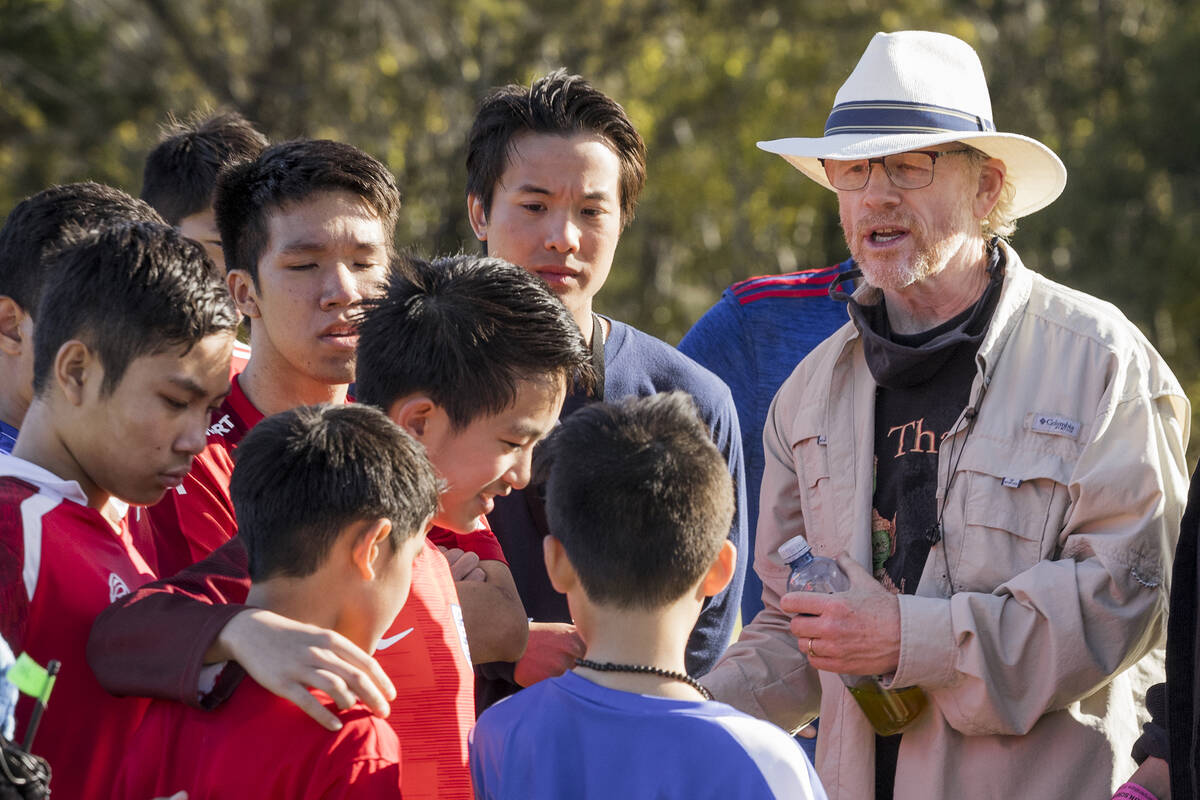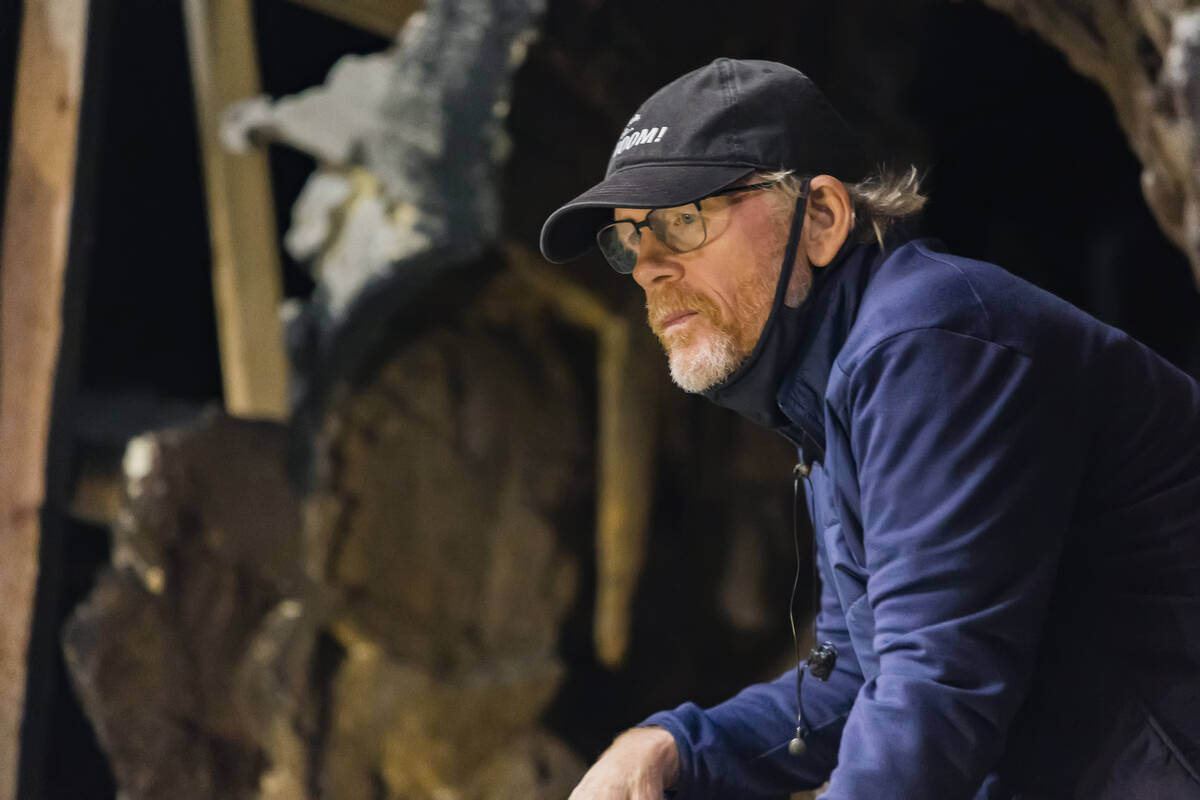Dramatic cave rescue spurred Ron Howard to make ‘Thirteen Lives’
“I wanted to engage the nervous system of the audience,” Ron Howard explains. “It’s not just the rescue. It’s the emotional journey of the human connection.”
On a hot summer morning, the 68-year-old filmmaker is talking about his latest movie, “Thirteen Lives,” which hit theaters last weekend and is available to stream on Amazon starting Friday. Starring Viggo Mortensen, Colin Farrell and Joel Edgerton, the film chronicles the rescue of 12 boys and their soccer coach from a flooded Thailand cave in 2018.
“I knew that by getting really granular, personal and emotional that this could be my favorite kind of film — the kind of film that proves that remarkable outcomes are not just the stuff of fiction,” says the director who gave the world “Apollo 13.”
The two-time Academy Award winner’s career lifted off at age 6 when he played Opie on “The Andy Griffith Show,” followed by a turn as 1950s teen Richie Cunningham on “Happy Days.” Howard, who captured best picture and director Oscars for 2001’s “A Beautiful Mind,” has also called the shots on hit films such as “Rush,” “Backdraft” and “Cocoon.”
Review-Journal: What drove you to turn this real-life event into a film?
Ron Howard: My wife, Cheryl, was really glued to the story of the boys in the cave. I began to watch and hope for all involved. I remember how the outcome was such a relief to the entire world. It was one of those tremendous moments for humanity. Then, later, I had the chance to read William Nicholson’s script about the rescue. It not only delivered on everything but suggested so much more. There were more levels and dimensions to the heroics involved, especially with the Thai people. And there were surprises in this story. I just felt like I could make something that would be really visceral and immediate.
What does this kind of story say about the human spirit?
There are moments when people pull tighter and then incredible things can happen. The Thai people, government and leadership made this rescue possible by working together. People were taking real risks, physical risks and emotional risks as the stakes kept getting higher and higher up on that mountain. The parents were doing everything they could on an emotional and spiritual level. It was incredible.
When did you realize that it should be a movie?
The story was very cinematic, intense and suspenseful. Also, the initial draft of the script did a great job of distilling this story into something that was a good movie. Of course, as the rescue went through this gantlet of three intense days, there was maximum tension. They needed every child, every volunteer and every person to be out of that cave. That was their commitment. And with the monsoon rains coming, and the flooding intensifying, their journey was most precarious. All great movie fodder.
This shoot was often wet, cold and underwater or with liquid rushing in. Did the actors do some of their own stunts?
The real (cave divers) Rick Stanton and Jason Mallinson came in, and their job was to work with the actors and stunt team. There were wider shots with a lot of intense water volume and unbelievably tight squeezes. The actors ended up telling me, “We don’t want anybody to double us. We are learning this, and we’ll do it. We’ll even work on the weekends, whatever it takes.” I sort of placated them and said, “Well, to the extent we can, sure.” But they did it. It enabled me to make the cinematography so fluid and immediate because they were doing those squeezes where water volumes were dumping on them.
How did you create the caves?
We did have the advantage of lots and lots of footage, news coverage and so forth. We studied that very carefully and broke it down. Talking to the divers, they told us about the most dangerous and troubling places in the caves and on the mountain. The guys would point it out and say, “This is the place where there was a surprise. Here’s where a mishap happened. Here’s where the current changed.” I kept taking notes and building sequences around it.
Did you ever marvel at the bravery of these people?
I would say, “My God, these people actually did this!”
What’s important to you when you look at new projects?
I’m driven by my curiosity, to be honest. I also love to learn. I don’t go in knowing much about space or Formula One or math or diving or astronauts, but I love to learn and share what I learned.
Describe growing up on TV.
It was work and fun. It also seemed normal to me because it was the only childhood I ever had.
What is the best showbiz advice you ever received?
When I was 16, Henry Ford said to me, “If you love movies become a director. If you love acting, keep your focus on the theater.”
You married your wife, Cheryl, in 1975. What is the secret of a long marriage?
Communication.
Finally, what’s a great Sunday if you’re not working?
Sleeping. Reading. Family.























